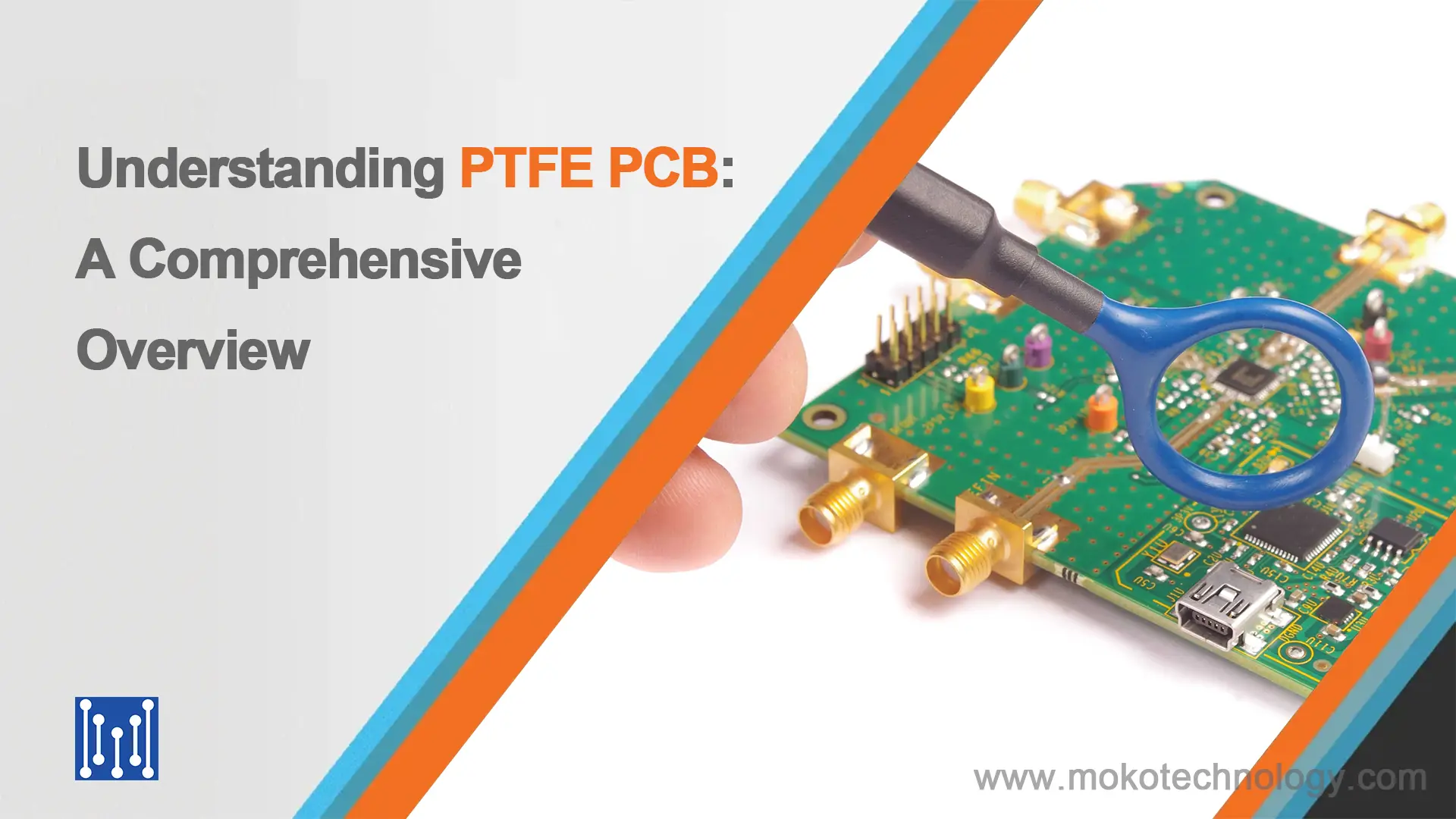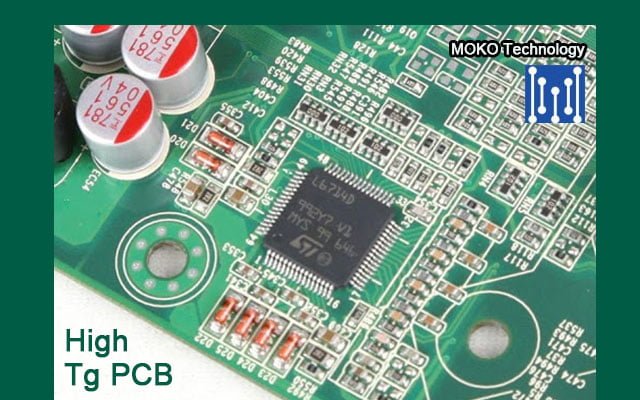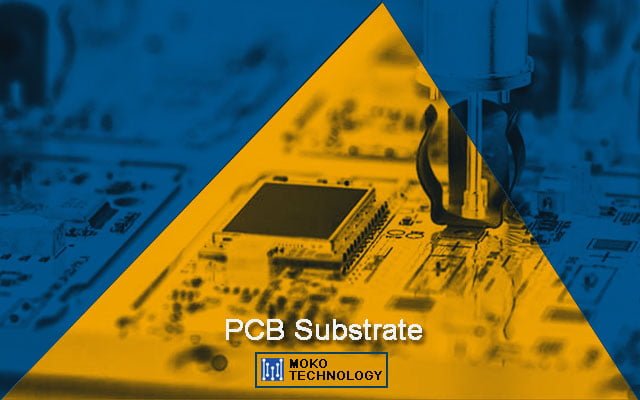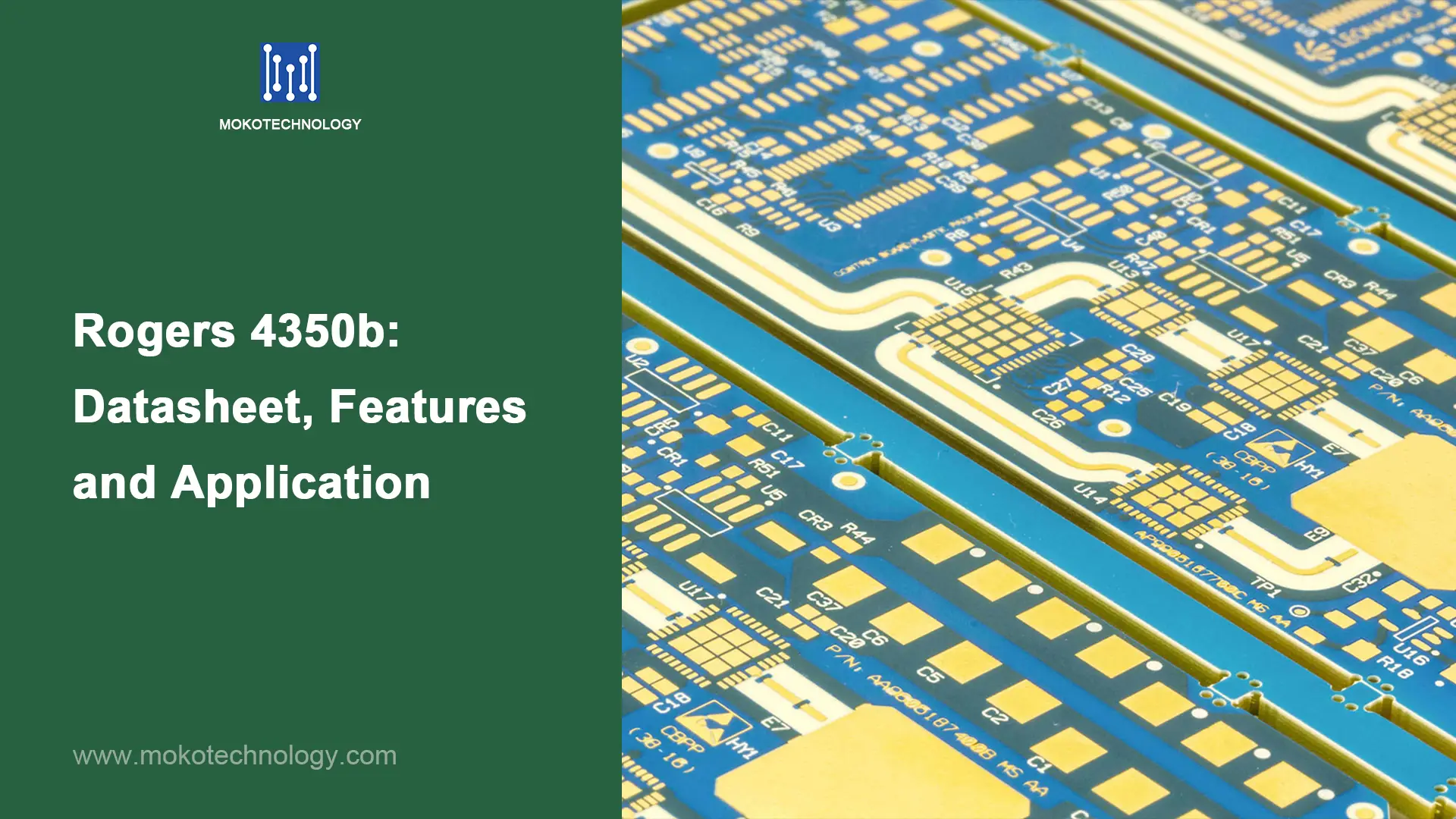I circuiti stampati forniscono le interconnessioni tra i componenti elettronici e sono fondamentali per il funzionamento dell'elettronica in tutti i settori. Among various Materiali PCB, I PCB in PTFE si distinguono per le loro proprietà eccezionali. In questa guida completa, esploreremo in modo approfondito la tecnologia PCB PTFE. Tratterò le proprietà e le specifiche chiave del PTFE, how it differs from conventional circuit board materials, typical applications, e così via. Alla fine, you will have an expanded understanding of when and how to leverage the PTFE circuit board to meet your most demanding application requirements.
What Is PTFE PCB?
PTFE PCB is a specialized type of printed circuit board made using high-performance PTFE (politetrafluoroetilene) substrate materials instead of standard FR4 laminates. Also known by the brand name Teflon, it can also be called Teflon PCB. PTFE is valued in printed circuit boards for its ability to withstand extreme temperatures, resist virtually all chemicals, and maintain stable electrical properties under harsh conditions. The unique properties of PTFE make PTFE circuit boards popular in demanding applications such as aerospace, militare, telecomunicazioni, and other industries where the environment is punishing, and reliability is critical
Properties of PTFE Circuit Board
The Teflon material gives PTFE PCB a robust set of properties entirely different from standard circuit boards:
- Excellent chemical resistance – PTFE retains its properties when exposed to oils, grease, and chemical reagents. This makes PTFE boards suitable for use in harsh chemical environments.
- Low temperature durability – PTFE maintains flexibility and toughness even at extremely low temperatures down to -196° This cold temperature resistance allows PTFE circuit boards to perform reliably in cryogenic applications.
- Weatherability – PTFE stands up well to all weather conditions including UV radiation, umidità, and temperature extremes. PTFE boards can be used outdoors and in unconditioned spaces.
- Basso dielectric losses– The non-polar nature of PTFE results in very low signal losses, especially at high frequencies. This makes PTFE a good insulator for RF and other high frequency applications.
- Non-stick surface – PTFE’s molecular structure gives it a slippery, non-adhesive surface. This prevents contamination and eases PCB assembly and cleaning.
- Moisture resistance – With very low water absorption, PTFE boards withstand high humidity environments without electrical or physical degradation.
- Excellent electrical properties – In addition to low losses, PTFE offers high dielectric withstand voltage and volume resistivity. Its stable dielectric constant of approximately 2.0 facilitates impedance control.
The specifications of commonly used Teflon PCBs are listed below:
| PCB Type | Costante dielettrica, ϵr Process | Thermal Coefficient of ϵr | Resistività del volume | Assorbimento dell'umidità | Conduttività termica | Densità | Resistenza alla sbucciatura del rame |
| RO3003 | 3.00±0.04 | -3ppm/℃ | 107 MΩ·cm | 0.04% | 0.50 W/m/K | 2.1gm/cm3 | 12.7libbre/pollici |
| RO3035 | 3.00± 0,05 | -45ppm/℃ | 107 MΩ·cm | 0.04% | 0.50 W/m/K | 2.1gm/cm3 | 10.2libbre/pollici |
| RO3035 | 6.15±0.15 | -262ppm/℃ | 105MΩ·cm | 0.02% | 0.79 W/m/K | 2.6gm/cm3 | 7.1libbre/pollici |
| RO3010 | 10.2±0.30 | -395ppm/℃ | 105MΩ·cm | 0.05% | 0.95 W/m/K | 2.8gm/cm3 | 9.4libbre/pollici |
PTFE PCB Vs FR4 PCB: Qual è la differenza? Come scegliere?
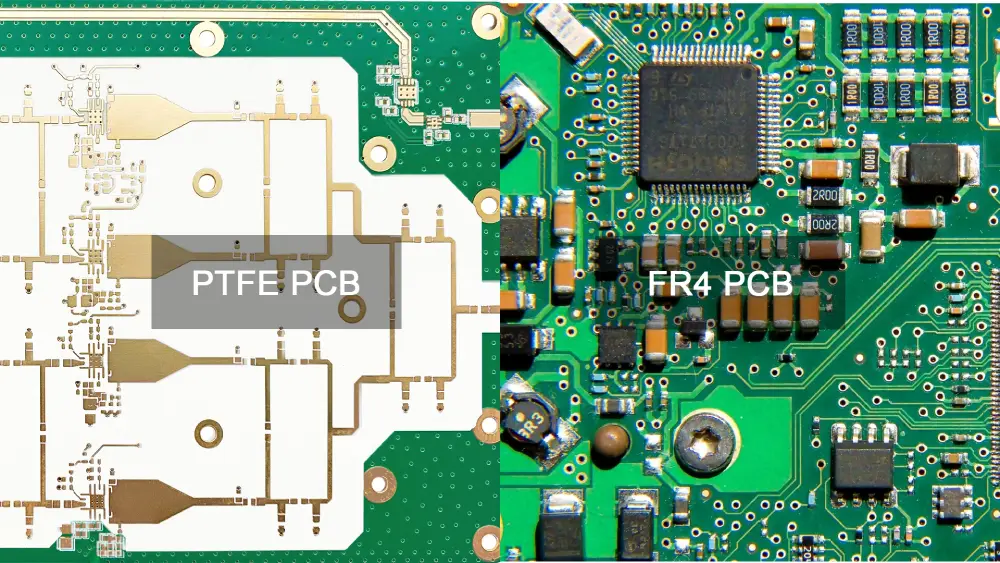
PTFE and FR4 are two very different circuit board materials – while FR4 is the standard for most general applications, PTFE provides superior thermal and chemical resistance. The key differences are that PTFE can withstand temperatures from -192°C up to over 250°C without issue, while FR4 loses structural integrity above 110°C. Inoltre, PTFE is chemically inert, resisting nearly all industrial chemicals and solvents that would damage FR4. però, PTFE also comes with a higher cost, circa 5-10 times that of FR4 boards. For most consumer electronics where cost is critical, FR4 remains the best option, but for industrial, militare, aerospaziale, and other demanding applications where high heat or harsh chemicals are present, PTFE is likely worth the investment to enable reliable performance in those extreme conditions.
When selecting a circuit board material, consider the expected operating conditions and determine if PTFE’s thermal and chemical resistance justify the increase in manufacturing cost over standard FR4 boards. Analyze the application’s temperature limits, chemical exposure risks, and budget to make the optimal choice between these two ubiquitous but very different substrate options.
| Proprietà | FR4 | PTFE |
| Intervallo di temperatura | 110°C maximum | -192°C to over 260°C |
| Costante dielettrica | 3.8 – 4.8 | 2.1 – 2.6 |
| Rigidità dielettrica | 150-200 V/mil | 300-500 V/mil |
| Assorbimento dell'acqua | 0.1% | 0.03-0.1% |
| Resistenza chimica | Moderare – damaged by some solvents/acids | Eccellente – resistant to nearly all chemicals |
| Conduttività termica | 0.3-0.6 W/m/K | 0.440 – 0.95 W/m/K |
| Flessibilità | Rigido | Can be rigid or flexible |
| Costo | Basso | 5-10x higher than FR4 |
Applications of PTFE PCB
PTFE circuit boards are valued for use in demanding industrial, aerospaziale, medico, and military settings thanks to their robust thermal and chemical resistance properties.
- In manufacturing facilities, PTFE’s ability to withstand exposure to corrosive chemicals and fluids makes it an ideal choice for process control and monitoring electronics. PTFE boards maintain reliability despite harsh industrial environments.
- The non-polar nature and stable dielectric properties of PTFE also suit it well to high frequency applications like radar systems. PTFE is commonly used as the circuit board substrate in aviation and marine phased array radar designs where precise impedance control is critical.
- Medical device manufacturers leverage PTFE’s biocompatibility and sterilization compatibility to produce monitoring and imaging systems able to perform reliably under hospital conditions. PTFE meets stringent FDA requirements for use in patient contact devices.
- For aerospace applications, lightweight yet durable PTFE boards offer key advantages. PTFE’s extreme temperature tolerance ensures stable performance for onboard electronics exposed to severe cold in space applications or intense heat during atmospheric re-entry.
Choosing a Reliable Teflon PCB Manufacturer
Realizing the full benefits of PTFE requires proper fabrication by an experienced PCB manufacturer. MOKO Technology is an excellent option when sourcing high-quality PTFE printed circuit boards. With years of expertise producing advanced PCBs from specialty materials like PTFE, ceramica, e poliimmide, MOKO Tech has honed the specialized capabilities required to optimally process these unique substrates. They hold rigorous quality certifications including ISO 9001 e ISO13485, indicating consistent and controlled processes. Want to start your PTFE PCB projects? Contattaci to get a fair quote.
